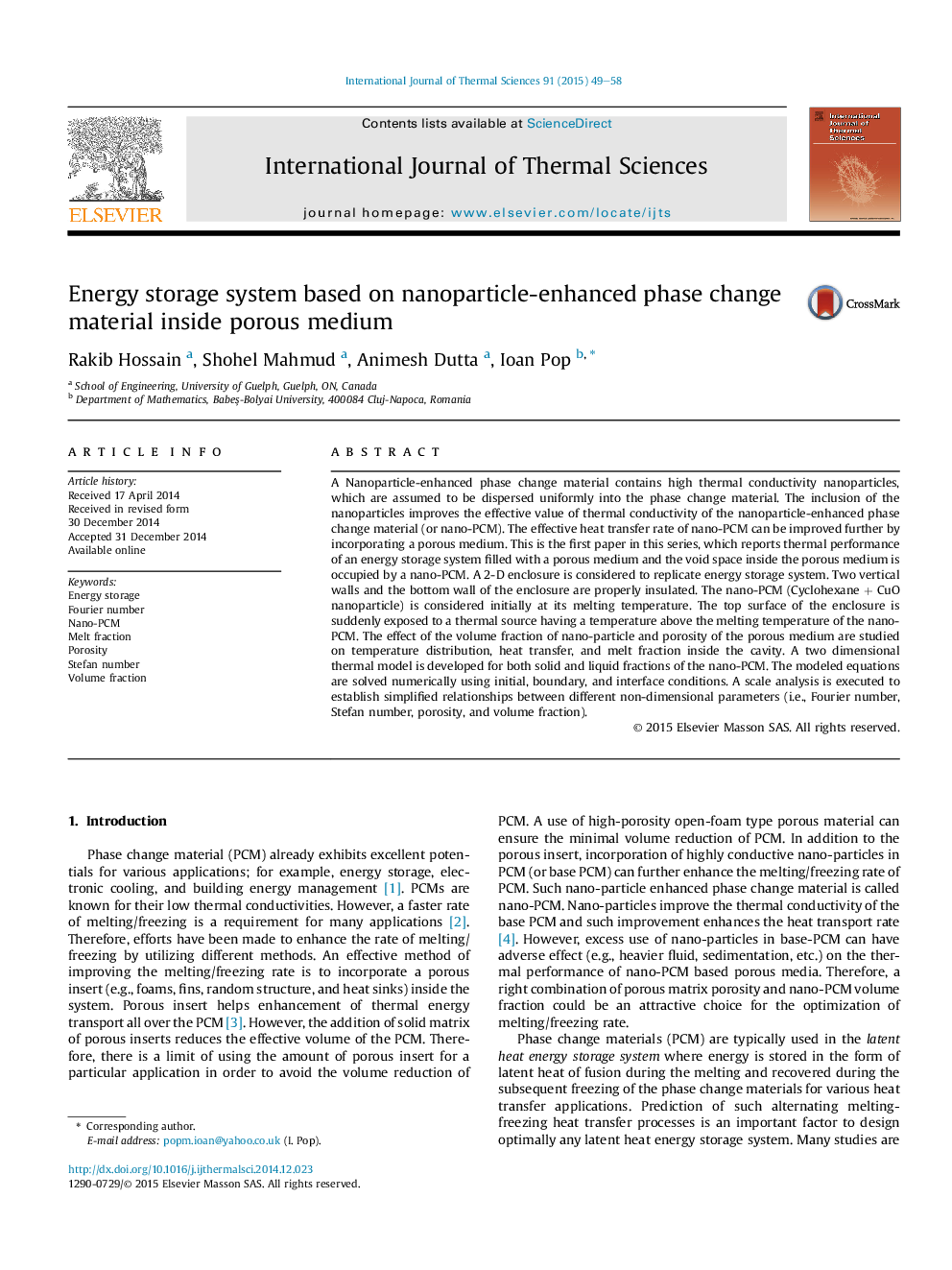| Article ID | Journal | Published Year | Pages | File Type |
|---|---|---|---|---|
| 7060960 | International Journal of Thermal Sciences | 2015 | 10 Pages |
Abstract
A Nanoparticle-enhanced phase change material contains high thermal conductivity nanoparticles, which are assumed to be dispersed uniformly into the phase change material. The inclusion of the nanoparticles improves the effective value of thermal conductivity of the nanoparticle-enhanced phase change material (or nano-PCM). The effective heat transfer rate of nano-PCM can be improved further by incorporating a porous medium. This is the first paper in this series, which reports thermal performance of an energy storage system filled with a porous medium and the void space inside the porous medium is occupied by a nano-PCM. A 2-D enclosure is considered to replicate energy storage system. Two vertical walls and the bottom wall of the enclosure are properly insulated. The nano-PCM (Cyclohexane + CuO nanoparticle) is considered initially at its melting temperature. The top surface of the enclosure is suddenly exposed to a thermal source having a temperature above the melting temperature of the nano-PCM. The effect of the volume fraction of nano-particle and porosity of the porous medium are studied on temperature distribution, heat transfer, and melt fraction inside the cavity. A two dimensional thermal model is developed for both solid and liquid fractions of the nano-PCM. The modeled equations are solved numerically using initial, boundary, and interface conditions. A scale analysis is executed to establish simplified relationships between different non-dimensional parameters (i.e., Fourier number, Stefan number, porosity, and volume fraction).
Related Topics
Physical Sciences and Engineering
Chemical Engineering
Fluid Flow and Transfer Processes
Authors
Rakib Hossain, Shohel Mahmud, Animesh Dutta, Ioan Pop,
